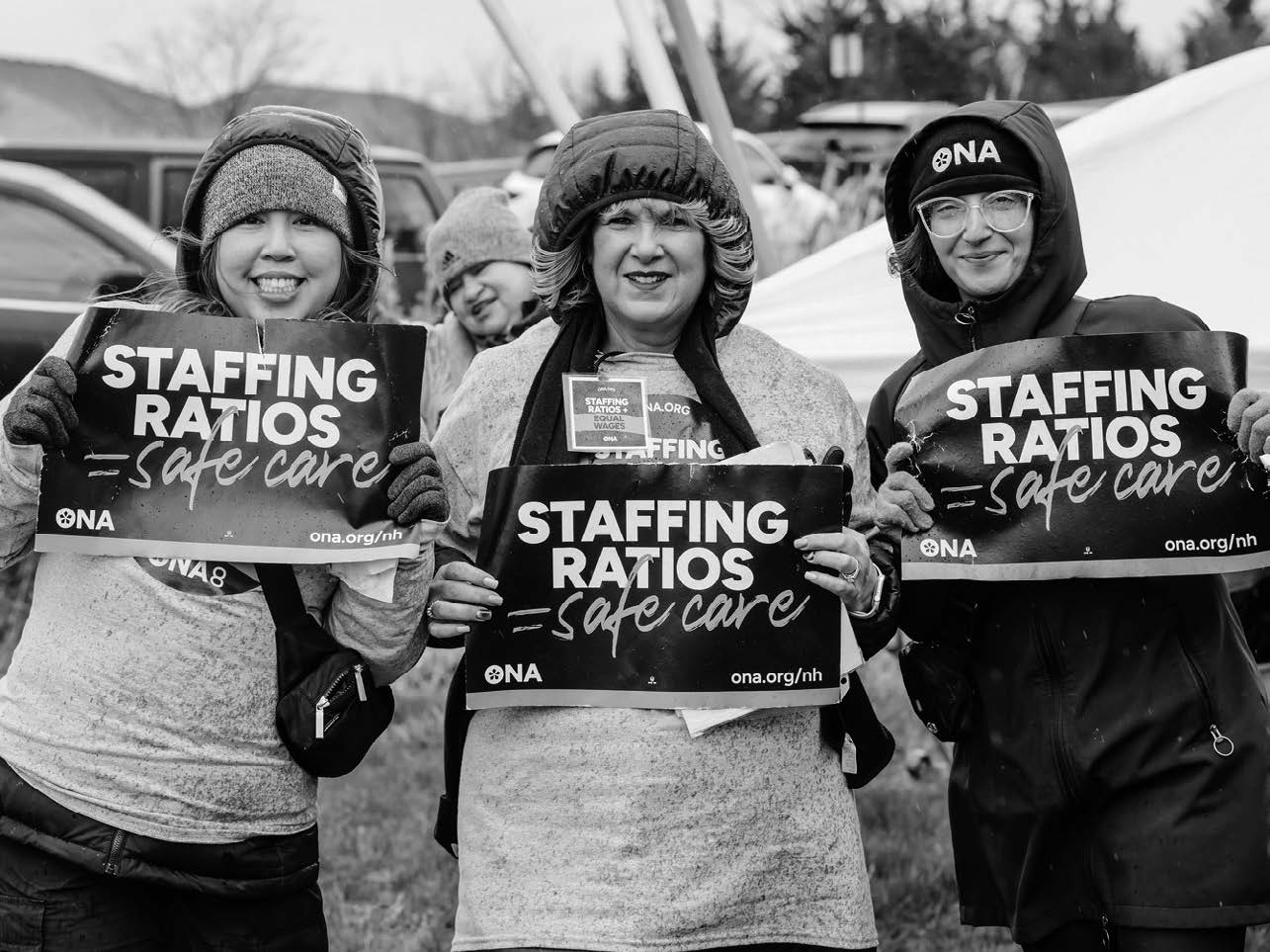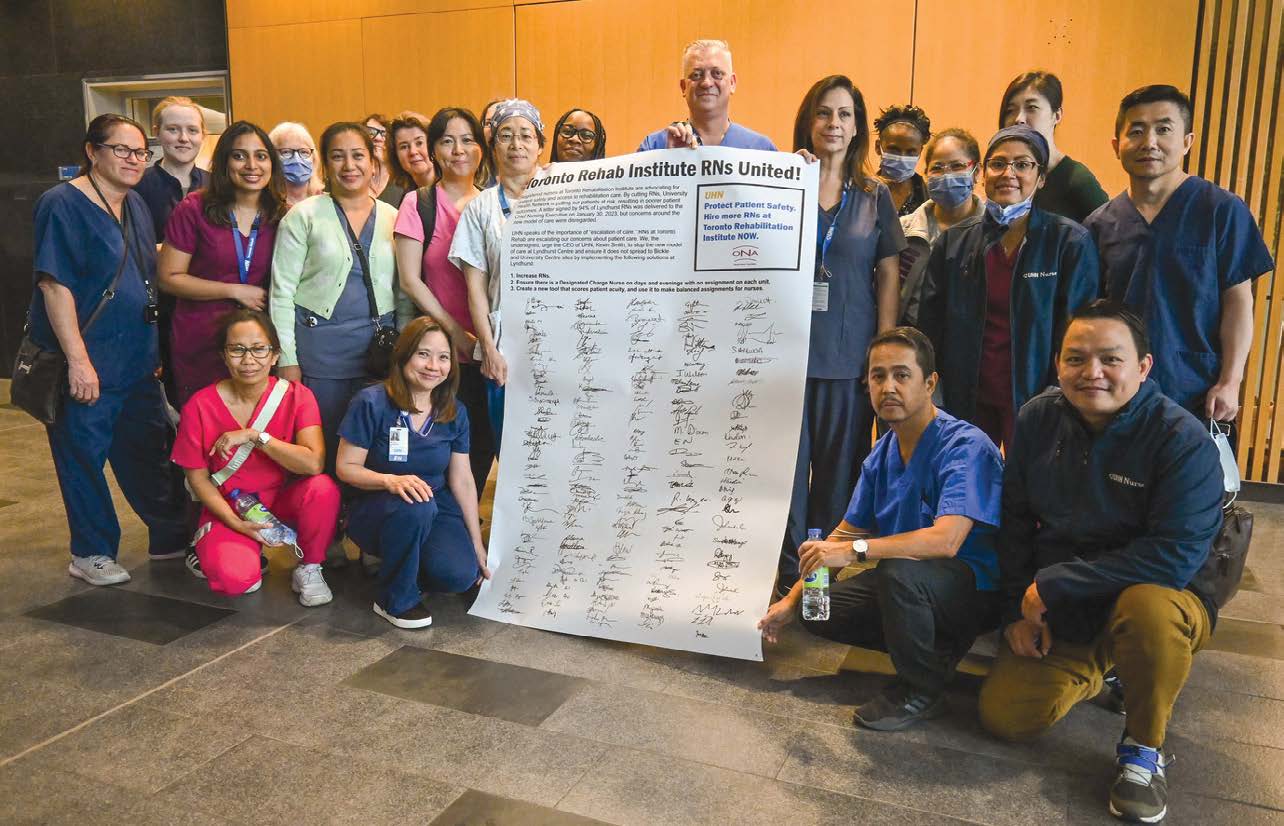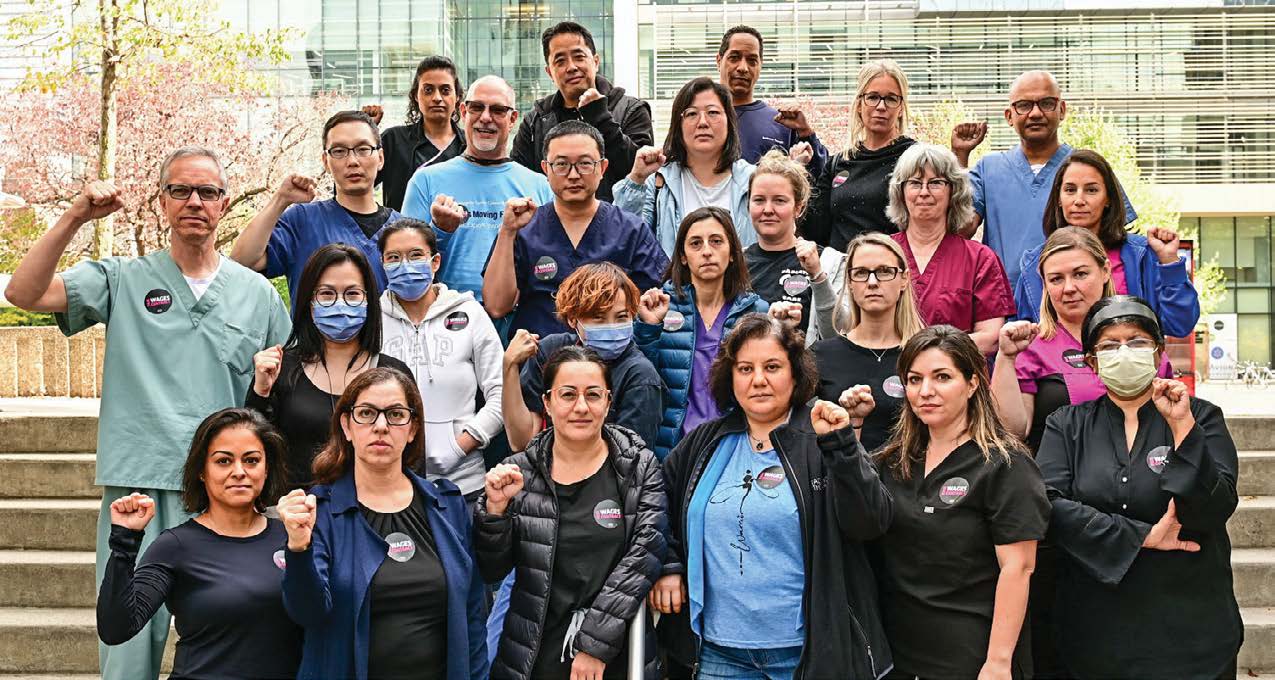Campaigns
Member Guide: Your Guide to Local Action


This handy guide contains eight proven strategies to empower your local actions. Learn how to raise awareness, communicate effectively and build support in your workplace and community.

As a member of the Ontario Nurses’ Association (ONA), you know all too well the challenges we face as our provincial health-care system continues to face reckless changes, inadequate funding, and threats of increased privatization.
After all, as a nurse or health-care professional, you have first- hand experience of the serious impact bed closures, service cuts, regressive government legislation and staff shortages have on patients, residents and clients, and your own ability to provide safe quality care.
Local action is extremely effective. ONA members have proven that time and time again. By coming together and speaking with one strong voice, you have the power to effect change in your workplaces and the communities in which you live. And we strongly encourage you to understand, embrace and use that power. This handy guide contains eight proven strategies to show you how.
If you would like further information and/or support fighting a local issue after reading this guide, we are here to help. Just drop us an email at onamail@ona.org .
Together, we’ve got this!
Has your employer announced cuts at your health-care facility? Are you ready to engage your coworkers and your community? Let others know immediately!
For action to be taken, people must be aware of what is occurring. Communicate with as many people as you can about what has happened and how it impacts them. Don’t forget to inform:
As a nurse or health-care professional, you possess the skills needed to successfully advocate for your patients, residents and clients. You can use this natural ability to its full advantage to speak effectively:

Here are some tips for effective action and communications with the employer:

The first step to engaging your coworkers is to identify the problem they are trying to solve. Everyone cares about something at work. Everyone wants respect. Everyone wants to go to work and know they are providing the care their patients, residents and clients need.
It’s likely your coworkers are feeling as if nothing can change. They don’t know that anything can be done. It’s not apathy. Figure out what your coworkers care about and what, if anything, is holding them back. Respond to it.

The second step is to determine if the problem is a good organizing issue. A good organizing issue is:
You are not isolated individuals at your workplaces, but integral parts of broader communities. Engaging these communities is crucial for building power and achieving your goals. It builds solidarity between those who access care and those who provide it – you! Through conversations and finding shared values, you are forming a strong base of support to fight for better public health care.

Friends, family, neighbours, patient advocacy groups, schools, religious groups, clubs, associations, etc.
Amplifying your message on social media.
Sending letters to the editor.
Signing petitions.
Contacting local elected representatives.
Organizing a rally/information picket.
Hosting an open forum.
As you have read throughout this guide, you have a powerful voice and ability to advance change.
Communicating with your local elected representative can be an effective way to build support for your issues and priorities. You can influence change by following these proven tips for success!
The best way to ensure your elected official understands the issue and its impact is to meet with them face-to-face. To set up a meeting, send an email and explain who you are and why you’re requesting a meeting. You should specify a timeframe for when you want to meet. This encourages the official to respond to your request more quickly. Phone the office to confirm your email was received. Make a follow-up phone call after 48 hours if you do not receive a timely response.
Prepare for the meeting. Reach out to an ONA Government and External Relations Specialist for support at onamail@ona.org. Compile background information on the elected official. Have a prep meeting with the individuals you are advocating with and assign roles and talking points so everyone plays a part.
During the meeting, explain your issue clearly and present a defined “ask.” Speak as a front-line nurse or health-care professional, not as a representative of your workplace. Do not get sidetracked by the elected official or staff who are in attendance. Stick to the issues at hand.


Engaging with the media can be fun and there is a formula for doing so effectively. Talking to reporters is a powerful way to educate and influence the community and decision-makers. Before speaking with the media, ensure that you:
Refer media inquiries to media@ona.org. The Provincial President is the official spokesperson for all media, based on ONA policy.
Anyone speaking to the media other than the President, including Local Coordinators or Bargaining Unit Presidents, needs approval.
Have developed your key messages – the top three or four points you want to get across.
Make these key messages brief and high-level, i.e., “cuts to staffing and beds will harm patients.”
Approach your key messages from your position as a patient advocate; what is the impact on those who will read/see/hear your key messages?
Use plain language (avoid acronyms, medical terminology) that is easily understood by anyone not working in health care.
Ensure you have a designated spokesperson before approaching the media about a story.
There are several ways:
We use cookies to improve your experience on our website. To learn more, read our privacy policy.